The Hex Meshing Tool from DEP MeshWorks enables rapid tyre modelling and performance optimisation across vehicular segments.
Story by: Deepti Thore
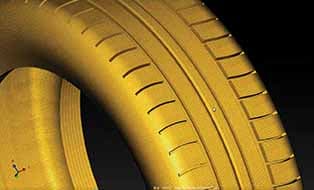 Tyre modelling has come a long way from just representing tyre data obtained from mathematical representation limited to static conditions. A testimony to it being more dynamic today than ever before is the proprietary software platform – ‘MeshWorks’ from Detroit Engineered Products (DEP). MeshWorks is claimed to enable a technologically superior tyre modelling technique for motorcycle tyres, passenger car tyres, and off-road tyres. Through hex meshing, a complex but standard collection of cubes, concept designs are used to analyse geographical and cartographic data. The latter is known to study the rules of the spatial arrangement of phenomena and their interrelationships, dependence, and development. According to Basant Sharma, Vice President, DEP, it is a tedious and time-consuming process to mesh or model the complexity of tyre geometry. Especially the treads. Of the opinion that the time spent to model tyre treads constituting the little grooves and ridges, crucial to braking and safe manoeuvring is directly responsible for the end quality. It also results in better simulation and comparison against the real-world scenario, he explained. He cites the amount of time a user can spend is usually very limited, and thus any automation in modelling and meshing are always welcome.
Tyre modelling has come a long way from just representing tyre data obtained from mathematical representation limited to static conditions. A testimony to it being more dynamic today than ever before is the proprietary software platform – ‘MeshWorks’ from Detroit Engineered Products (DEP). MeshWorks is claimed to enable a technologically superior tyre modelling technique for motorcycle tyres, passenger car tyres, and off-road tyres. Through hex meshing, a complex but standard collection of cubes, concept designs are used to analyse geographical and cartographic data. The latter is known to study the rules of the spatial arrangement of phenomena and their interrelationships, dependence, and development. According to Basant Sharma, Vice President, DEP, it is a tedious and time-consuming process to mesh or model the complexity of tyre geometry. Especially the treads. Of the opinion that the time spent to model tyre treads constituting the little grooves and ridges, crucial to braking and safe manoeuvring is directly responsible for the end quality. It also results in better simulation and comparison against the real-world scenario, he explained. He cites the amount of time a user can spend is usually very limited, and thus any automation in modelling and meshing are always welcome.
Overcoming shortcomings of conventional tools
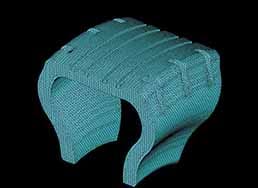 It is well known that tyre modelling requires a lot of expertise and takes up several hours. Addressing this void, DEP MeshWorks ‘Hex Meshing Tool’ helps overcome the shortcomings of existing traditional hex-meshing tools known to be both tedious and mostly manual. Naturally, they are also dependent on skilled personnel. Complex geometries make the task even more difficult. From highly automated to semi-automated tools, DEP users can look forward to meshing such complex geometries with minimal technical expertise. For instance, a 2D structure can be analysed and converted into a 3D model. In the 3D model, calculations based on the inflation pressure are applied to the valve of the tyre. Load application tests are carried out to analyse the contact patch.
It is well known that tyre modelling requires a lot of expertise and takes up several hours. Addressing this void, DEP MeshWorks ‘Hex Meshing Tool’ helps overcome the shortcomings of existing traditional hex-meshing tools known to be both tedious and mostly manual. Naturally, they are also dependent on skilled personnel. Complex geometries make the task even more difficult. From highly automated to semi-automated tools, DEP users can look forward to meshing such complex geometries with minimal technical expertise. For instance, a 2D structure can be analysed and converted into a 3D model. In the 3D model, calculations based on the inflation pressure are applied to the valve of the tyre. Load application tests are carried out to analyse the contact patch.
 Additionally, driving simulations are also applied. Repairing meshes, a largely manual process is also improved drastically. Mentioned Radha Krishnan, Founder & President, Detroit Engineered Products, “Essentially, there are two components that affect the tyre behaviour- the tyre structure itself, and the air around it. The tyre design has to be such that it can withstand varied weather conditions of summer, winter and monsoons.” Sharma drew attention to four broad factors known to vary for each vehicle tyre type: Vehicle to road interface, vehicle load support, road surface friction, and road irregularities. “The heavy-duty off-road ones have the maximum variable variants of factors, and must logically account for the maximum flexibility and robustness in terms of design,” he opined. Building hex mesh for modelling tyres is, therefore, a challenging task along with the need for matched nodes at the interfacing segments. According to Krishnan, the way a tyre interacts with the road affects its behaviour, and it passes that directly to the body of the car, and in turn the passengers compelling automakers and tyre manufacturers to work heavily in the tyre design area to get the specifications accurate. Meshwork also provides automated tools for better mesh flow, targeted mesh size or pattern in the area of interest etc.
Additionally, driving simulations are also applied. Repairing meshes, a largely manual process is also improved drastically. Mentioned Radha Krishnan, Founder & President, Detroit Engineered Products, “Essentially, there are two components that affect the tyre behaviour- the tyre structure itself, and the air around it. The tyre design has to be such that it can withstand varied weather conditions of summer, winter and monsoons.” Sharma drew attention to four broad factors known to vary for each vehicle tyre type: Vehicle to road interface, vehicle load support, road surface friction, and road irregularities. “The heavy-duty off-road ones have the maximum variable variants of factors, and must logically account for the maximum flexibility and robustness in terms of design,” he opined. Building hex mesh for modelling tyres is, therefore, a challenging task along with the need for matched nodes at the interfacing segments. According to Krishnan, the way a tyre interacts with the road affects its behaviour, and it passes that directly to the body of the car, and in turn the passengers compelling automakers and tyre manufacturers to work heavily in the tyre design area to get the specifications accurate. Meshwork also provides automated tools for better mesh flow, targeted mesh size or pattern in the area of interest etc.
Morphing and parameterisation
In concept tyre modelling, existing tyre CAE models are rendered into new shape and size by creating quick design and CAE concepts without creating actual 3D CAD models for these concepts. This is also known to significantly automate the process. “By using morphing and parameterisation techniques in the design stage, companies can find fault and rectify and reevaluate at an initial stage itself, instead of at a prototyping and testing stage ensuring a faster go-to-market implementation,” mentioned Sharma. In addition to hex meshing, DEP also provides meshing tools to simulate tyre models accurately using the advanced modelling techniques like midplane meshing among others to correlate the results better with real-world scenarios.
The way forward
Currently, at the design and validation stage, MeshWorks as a tool will also enable retreading or aftermarket to help save time and create a new variant for the market faster, opined Sharma. For instance, if a tyre maker has hit the road with a tyre, but found challenges that were not accounted for and need a revised design, instead of having to work from scratch on a new design, through MeshWorks, the manufacturer can build on the existing CAD model and optimise the design. Sharma drew attention to India being an easier market for tyres unlike other geographies asking for tyres to be changed as per the season. “Technologies available to companies are no longer restricted to geography and many companies could very well be performing their design and optimisation in India,” he concluded. ACI




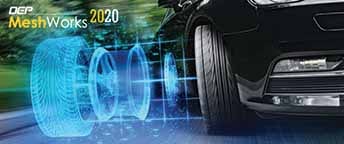


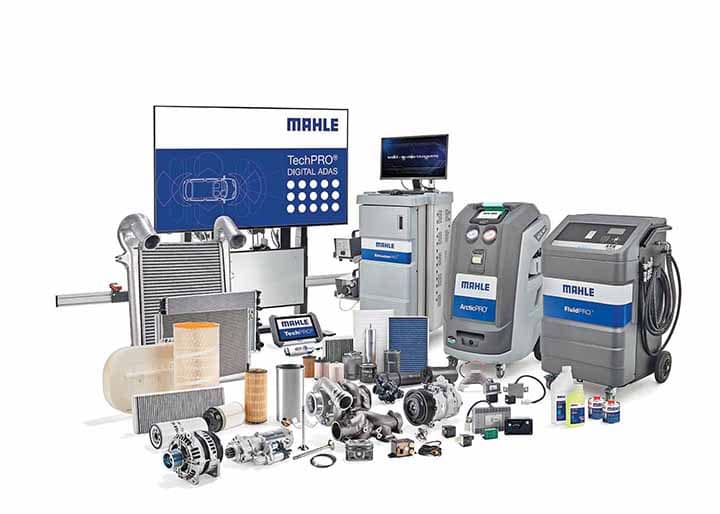



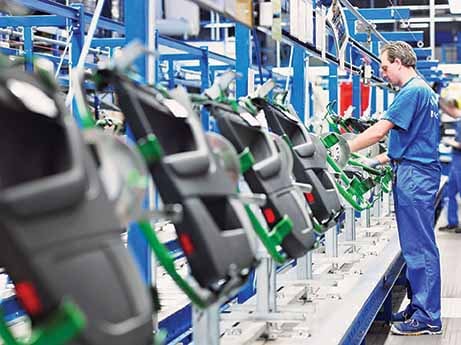

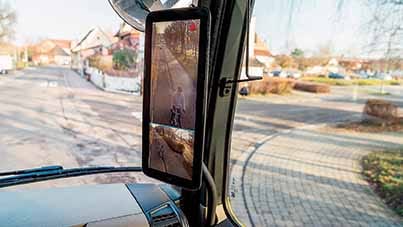


Leave a Reply